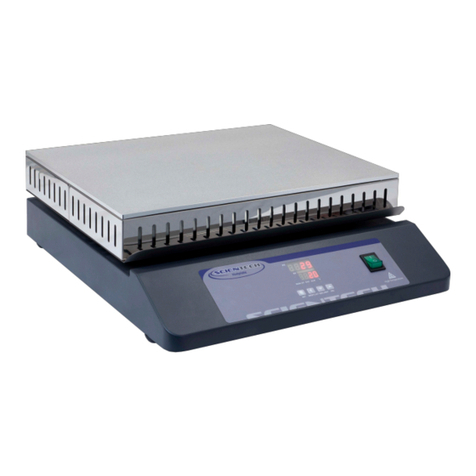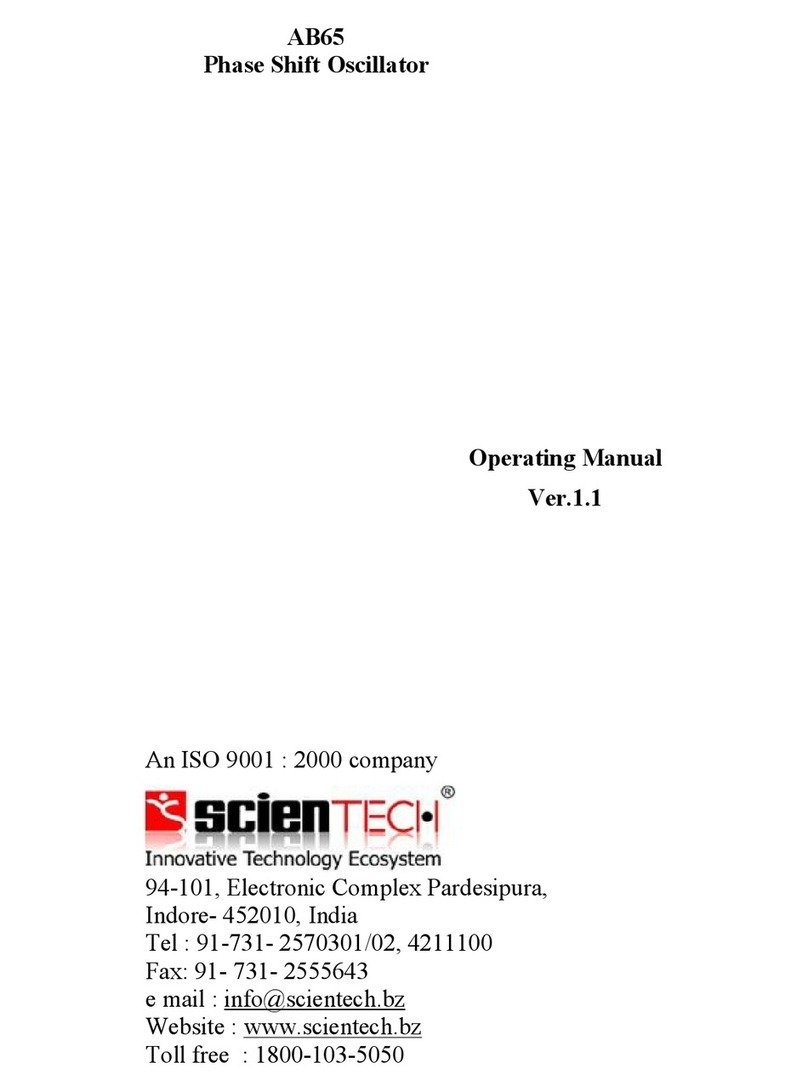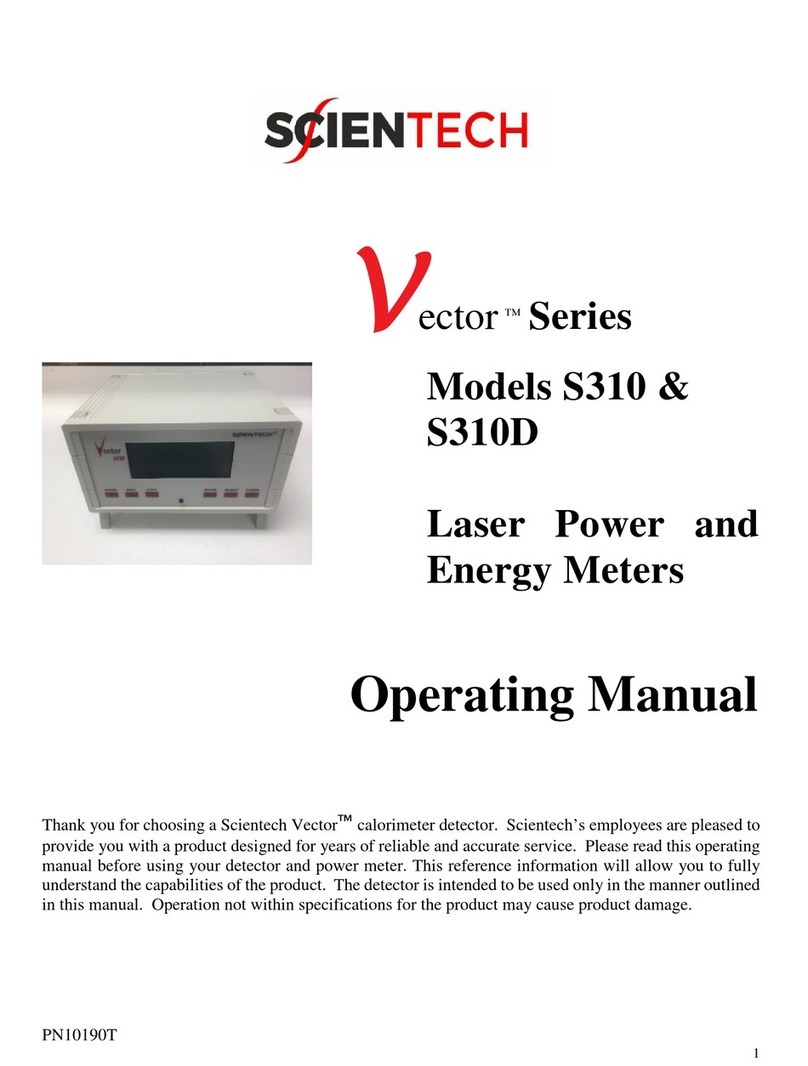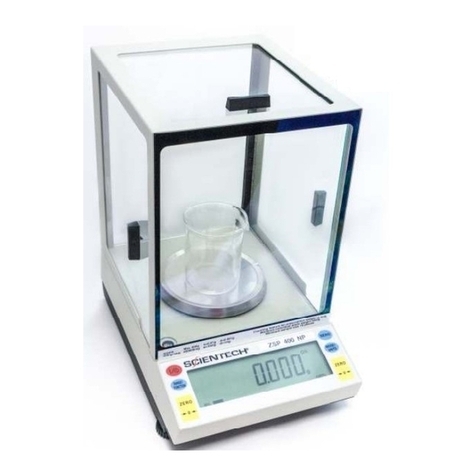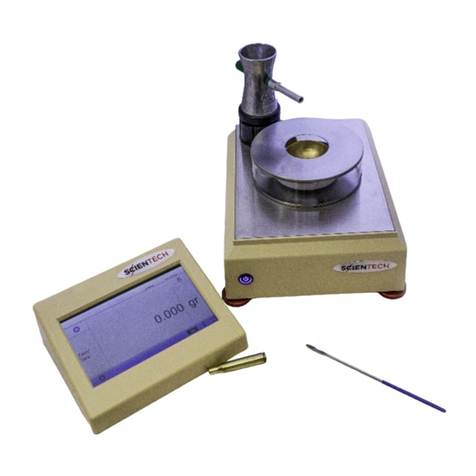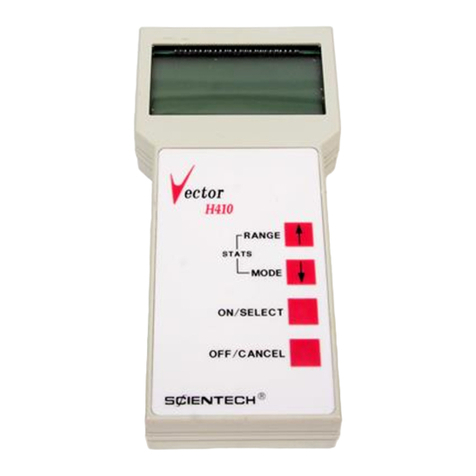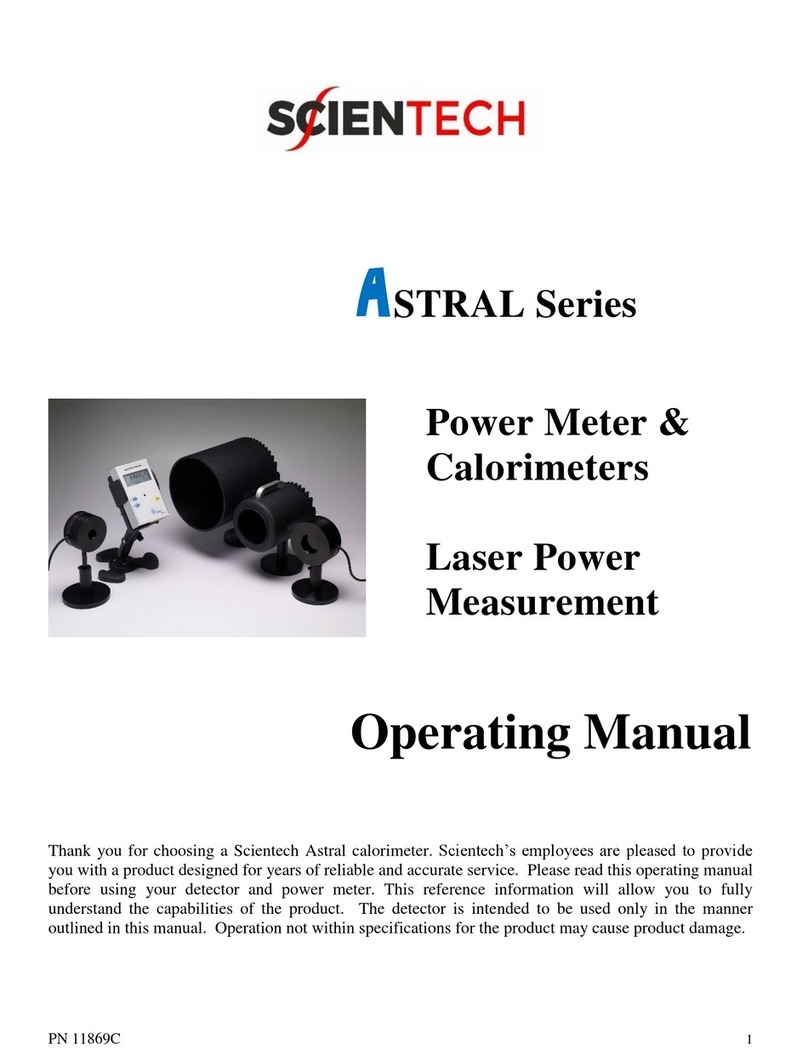
Thank you for choosing a Scientech laser power and energy measurement system. The
Scientech employees are pleased to provide you with instruments designed and
manufactured for years of reliable service.
Please read this manual completely before using the equipment. This information will enable you to fully utilize
the instruments.
TABLE OF CONTENTS
ASTRAL CALORIMETER SPECIFICATIONS: .................................................................................................................................................. 1
VECTOR PYROELECTRIC DETECTOR SPECIFICATIONS............................................................................................................................ 2
UNPACKING AND SETUP...................................................................................................................................................................................... 4
FRONT PANEL CONTROLS .................................................................................................................................................................................. 6
RANGE ..................................................................................................................................................................................................................................... 6
MODE- ...................................................................................................................................................................................................................................... 6
FUNCTION ............................................................................................................................................................................................................................... 6
SELECT .................................................................................................................................................................................................................................... 7
COUNT UP COUNT DOWN.................................................................................................................................................................................................... 7
CANCEL ................................................................................................................................................................................................................................... 7
SAVE......................................................................................................................................................................................................................................... 8
OPERATING PROCEDURES ................................................................................................................................................................................. 8
HR Battery Installation .............................................................................................................................................................................................................. 8
Set Electrical Time Constants for Model PHF02, PHF05 and PHF09....................................................................................................................................... 9
CALIBRATION ...................................................................................................................................................................................................... 10
ATTENUATION FACTORS................................................................................................................................................................................... 10
TRANSFER CALIBRATION .................................................................................................................................................................................. 10
ENERGY MODE ................................................................................................................................................................................................... 11
POWER MODE ..................................................................................................................................................................................................... 12
VOLTS MODE....................................................................................................................................................................................................... 12
FUNCTION MENU CYCLES ................................................................................................................................................................................. 12
STATISTICS MODE.............................................................................................................................................................................................. 13
ANALOG TUNE BAR ............................................................................................................................................................................................ 13
DISPLAY BACKLIGHTING.................................................................................................................................................................................... 13
ANALOG OUTPUT................................................................................................................................................................................................ 14
JOULEMETER SENSOR OPERATION WITH OSCILLOSCOPE......................................................................................................................... 14
CALIBRATION USING ELECTRIC SUBSTITUTION HEATING ........................................................................................................................... 15
OPERATION OF ASTRAL CALORIMETERS WITH A DIGITAL VOLT METER................................................................................................... 15
OPERATION OF ASTRAL CALORIMETERS WITH AN ANALOG CHART RECORDER .................................................................................... 16
CALORIMETER RESPONSE................................................................................................................................................................................ 16
1. Numerical Integration.......................................................................................................................................................................................................... 17
2. Initial Voltage Interpolation................................................................................................................................................................................................. 17
3. Peak Voltage Estimate......................................................................................................................................................................................................... 17
CALORIMETER DAMAGE CONSIDERATIONS................................................................................................................................................... 18
1. Surface Absorbers................................................................................................................................................................................................................ 18
2. Volume Absorbers ............................................................................................................................................................................................................... 18
REMOTE INTERFACE.......................................................................................................................................................................................... 21
MODEL S200 MENU TREES................................................................................................................................................................................ 35
MODEL D200P MENU TREES ............................................................................................................................................................................. 36
MODEL D200PC MENU TREES........................................................................................................................................................................... 37
MODEL D200C MENU TREES ............................................................................................................................................................................. 38
LIMITED WARRANTY........................................................................................................................................................................................... 39
R
ETURNED GOODS PROCEDURE .................................................................................................................................................................... 39
